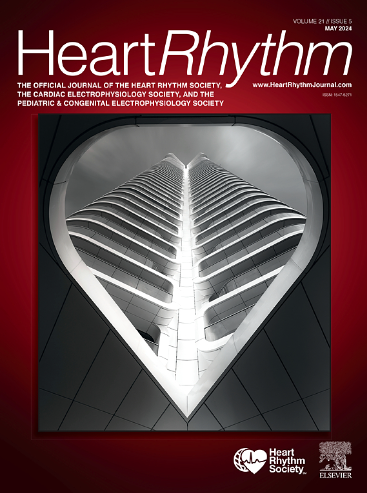Stroke risks in women vs men in Asian patients with atrial fibrillation: A temporal trend analysis and a comparison of the CHA2DS2-VASc and CHA2DS2-VA stroke risk stratification scores
IF 5.7
2区 医学
Q1 CARDIAC & CARDIOVASCULAR SYSTEMS
引用次数: 0
Abstract
Background
The 2024 European guidelines for atrial fibrillation (AF) recommended the use of the sex-less CHA2DS2-VASc score (ie, CHA2DS2-VA) for stroke risk assessment, but this has been less well-validated in Asian cohorts.
Objective
We aimed to perform a temporal analysis of stroke risks in women vs men with AF in Taiwan and to compare the performance of CHA2DS2-VASc vs CHA2DS2-VA scores.
Methods
We used Taiwan’s National Health Database (2000–2021) to compare CHA2DS2-VASc and CHA2DS2-VA scores by 2-year intervals, assessing performance with net reclassification index, integrated discrimination improvement, and C-statistics.
Results
We analyzed 495,569 newly diagnosed, non-anticoagulated patients with AF (44% women). Across calendar years, women consistently had higher ischemic stroke risks than men (incidence rate ratio [IRR] 1.13–1.26, all P < .05). Among those with CHA2DS2-VA scores of 0–1, women had a lower stroke risk (score 0: IRR 0.81; score 1: IRR 0.88, both P < .001). For scores 2–8, stroke risk was higher in women (IRR 1.04–1.11, all P < .05). CHA2DS2-VASc significantly outperformed CHA2DS2-VA in net reclassification index from 2000 to 2021 and in integrated discrimination improvement from 2000 to 2015. C-statistics were slightly higher for CHA2DS2-VASc from 2000 to 2013 (P < .05), but not significantly different after 2014 (P > .05), suggesting comparable performance of the 2 scores in more recent years.
Conclusion
Women with AF have a higher stroke risk than men only in high CHA2DS2-VA score categories, suggesting female sex is more likely to be a risk modifier of stroke in AF. Retaining the female sex as a component of the CHA2DS2-VASc score may improve the net reclassification for stroke events in Asian patients with AF.
亚洲房颤患者女性与男性的卒中风险:CHA2DS2-VASc和CHA2DS2-VA卒中风险分层评分的时间趋势分析和比较
背景:2024年欧洲房颤(AF)指南推荐使用无性别CHA2DS2-VASc评分(即。CHA2DS2-VA)用于卒中风险评估,但这在亚洲队列中得到的验证较少。目的:我们的目的是对台湾女性与男性房颤卒中风险进行时间分析,并比较CHA2DS2-VASc与CHA2DS2-VA评分的表现。结果:我们分析了495,569例新诊断的非抗凝房颤患者(44%为女性)。历年,女性缺血性卒中风险始终高于男性(发病率比(IRR) 1.13-1.26,所有p2DS2-VA评分均为0-1),女性卒中风险较低(评分0:IRR 0.81;评分1:IRR 0.88, p2DS2-VASc在2000-2021年的NRI和2000-2015年的IDI中均显著优于CHA2DS2-VA。2000-2013年CHA2DS2-VASc的c -统计值略高(p0.05),表明近年来两者的表现相当。结论:仅在CHA2DS2-VA评分较高的类别中,房颤女性卒中风险高于男性,提示女性性别更有可能成为房颤卒中的风险调节因素。保留女性性别作为CHA2DS2-VASc评分的组成部分,可能会改善亚洲房颤患者卒中事件的净重分类。
本文章由计算机程序翻译,如有差异,请以英文原文为准。
求助全文
约1分钟内获得全文
求助全文
来源期刊

Heart rhythm
医学-心血管系统
CiteScore
10.50
自引率
5.50%
发文量
1465
审稿时长
24 days
期刊介绍:
HeartRhythm, the official Journal of the Heart Rhythm Society and the Cardiac Electrophysiology Society, is a unique journal for fundamental discovery and clinical applicability.
HeartRhythm integrates the entire cardiac electrophysiology (EP) community from basic and clinical academic researchers, private practitioners, engineers, allied professionals, industry, and trainees, all of whom are vital and interdependent members of our EP community.
The Heart Rhythm Society is the international leader in science, education, and advocacy for cardiac arrhythmia professionals and patients, and the primary information resource on heart rhythm disorders. Its mission is to improve the care of patients by promoting research, education, and optimal health care policies and standards.
 求助内容:
求助内容: 应助结果提醒方式:
应助结果提醒方式:


